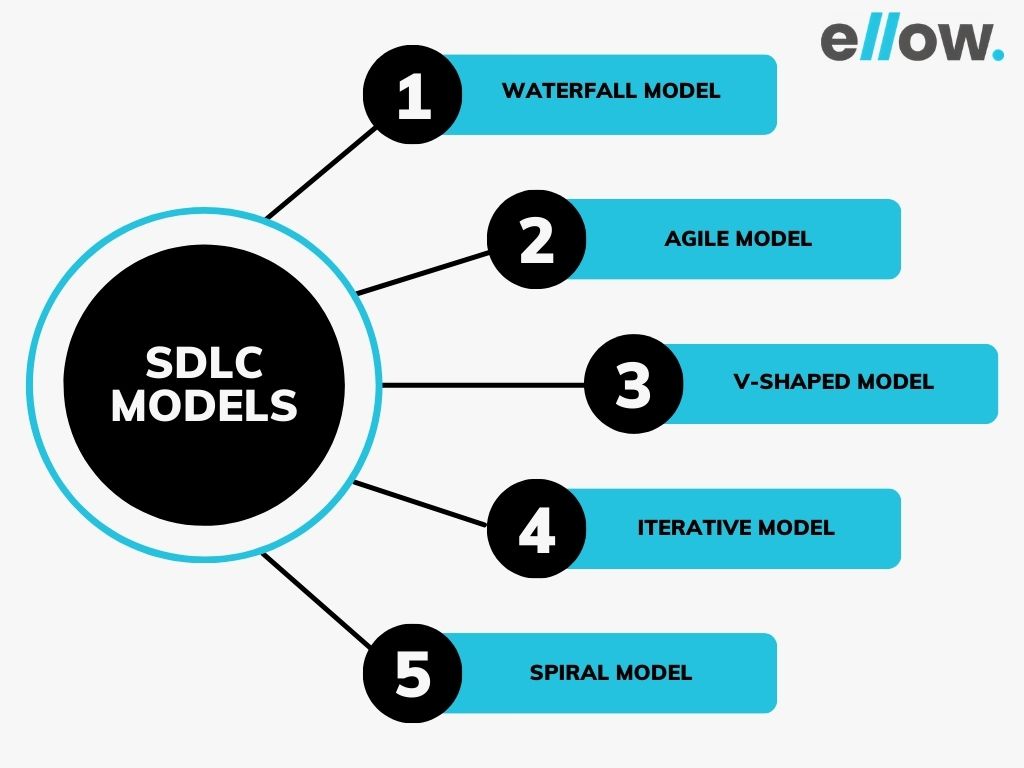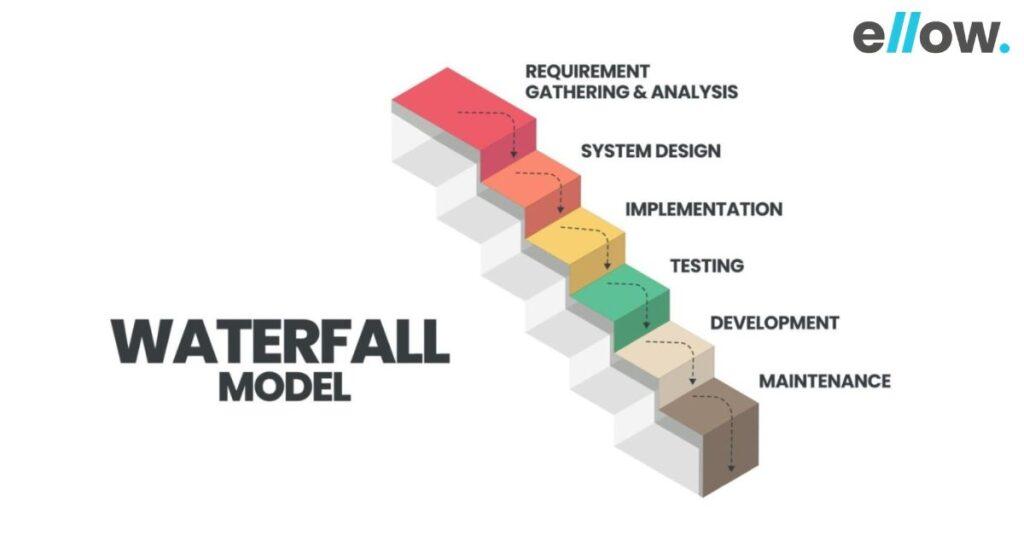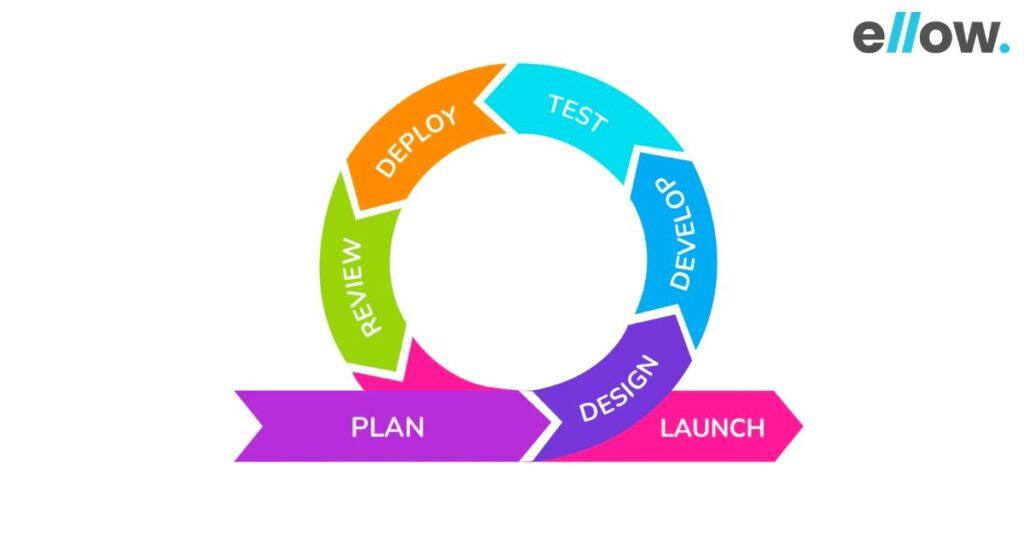Let’s build the future together.
Great ideas need great people. Partner with us to bring your vision to life, or take the first step in your career by joining our team of innovators.

In the dynamic world of software development, a structured approach is crucial for delivering high-quality software efficiently. The Software Development Life Cycle (SDLC) stands as a fundamental methodology guiding developers through the intricate process of software creation.
By breaking down the development process into distinct phases—planning, analysis, design, implementation, testing, and maintenance—SDLC offers a comprehensive framework for project management and execution.
This article explores the multifaceted nature of the SDLC, delving into its numerous advantages and potential drawbacks. Whether you are a seasoned developer or a business leader looking to understand the best practices in software development, this discussion will provide valuable insights into how SDLC can shape your projects.
We will also examine various SDLC models, including Waterfall, Agile, V-Shaped, Iterative, and Spiral methodologies, and offer practical tips for enhancing the efficiency and quality of your SDLC process.
Software Development Life Cycle (SDLC) refers to a methodology with clearly defined processes that define the step-by-step process of software development. It helps developers and organizations through various distinct phases, such as planning, analysis, design, implementation, testing, and maintenance.
SDLC is the backbone of efficient software development. This article delves into the complexities of the software development life cycle, looking into the advantages and disadvantages of SDLC.
SDLC encapsulates the sequential steps that give software solutions, to achieve the twin goals of effectiveness and high-quality output promptly.
In the planning stage, developers and stakeholders come together to define the project’s scope, objectives, timelines, and resources. It is like creating a roadmap for the entire software development journey.
Once the plan is set, the analysis stage starts. This is the stage where developers look deep into the requirements of the software.
With a clear understanding of the requirements, the design stage is like sketching the blueprint of a building. Developers create a detailed plan for the software architecture, including how different components will interact.
This stage involves writing code, integrating different modules, and ensuring that the software behaves as intended.
In the testing stage, developers rigorously evaluate the software to identify and fix bugs or issues. Testing ensures the software functions correctly and meets user expectations.
Once the software passes testing, it is ready for deployment. The software is released to users, and developers monitor its performance. Additionally, any issues that arise after deployment are addressed through ongoing maintenance. This phase ensures that the software remains effective and adapts to changes in technology or user needs.
Check this video out: SDLC Life Cycle for Beginners | Software Development Life Cycle with Real life example


The Waterfall Model, introduced as the pioneer among process models, follows a linear-sequential life cycle approach. Its simplicity lies in the fact that each phase must be completed before the subsequent one begins, ensuring a non-overlapping progression in the development process. This model often termed a Software Development Life Cycle (SDLC) approach, portrays the software development process with a clear, step-by-step flow.
This model is typically employed in projects with well-defined requirements and a stable scope. It is best suited for situations where the project’s objectives are clear from the outset and unlikely to undergo significant changes throughout the development process.

AGILE is a development approach that emphasizes continuous iteration of development and testing throughout the software development lifecycle. Unlike the Waterfall model, both development and testing activities occur simultaneously.
The Agile model is particularly effective in dynamic and fast-paced projects where requirements are subject to change. It excels in software development scenarios that prioritize iterative progress, collaboration, and adaptability, making it well-suited for projects with evolving or unclear requirements.
By creating smaller iterations, teams can focus on delivering value without requiring all requirements upfront. At the end of each iteration, the team reviews the backlog, re-prioritizing and investing time in the next sprint.
Agile mandates significant client involvement in the development process. Clients prioritize features for the next sprint and review work products during sessions, reducing confusion between client expectations and developer deliverables.
Agile optimizes resource utilization, enabling quick starts and sustained productivity. Work is divided into iterations with clear milestones and deadlines, keeping developers focused on progress.
Agile provides visibility into the product’s entire lifecycle. Stakeholders watch the application evolve, offering feedback throughout the development process.
In Agile, teams can define clear criteria for what constitutes a ‘ready’ state and the completion of a task, providing transparency and alignment on project progress. Clear definitions enhance developer accountability, fostering consensus on project goals.
For large software deliverables, assessing effort at the project’s outset can be challenging in Agile.
Agile may neglect necessary designing and documentation, impacting overall project understanding.
If the customer representative lacks clarity on the outcome, Agile projects may easily deviate from the intended path.
4. Reliance on Experienced Developers:
Agile’s decision-making requirements in the development process may restrict its suitability to seasoned programmers, potentially sidelining less experienced team members unless paired with seasoned counterparts.”

V-Shaped methodology, also known as the Verification and Validation model, is a software development lifecycle approach executed in a sequential manner resembling a V-shape. In this model, each stage of development is directly linked to a corresponding testing phase, ensuring a methodical and systematic approach.
This model is predominantly employed in projects with well-defined and stable requirements, where a sequential and systematic approach is essential. It is particularly effective in industries such as aerospace and defense, where rigorous testing and documentation are critical throughout the development lifecycle.
Iterative development is a methodology that involves breaking down the software development process into smaller, manageable chunks. It operates through repeated cycles of designing, developing, and testing feature code until a fully functional software application is ready for deployment.
Iterative methodologies find significant application in projects where requirements evolve or are not fully understood at the outset. This approach is particularly effective in software development, product prototyping, and scenarios where continuous refinement is essential for optimal outcomes.


The Spiral model, a hybrid approach blending iterative development with the structured elements of the waterfall model, prioritizes risk analysis throughout the software development lifecycle. This model allows for incremental product releases or refinements in each iteration around the spiral, combining flexibility with control.
This model has a risk-driven approach and finds utility in complex and high-risk projects, particularly those where frequent changes are expected. It is well-suited for software development endeavors that demand continuous refinement and risk assessment throughout the project lifecycle.
To improve efficiency and elevate the quality of your SDLC process, consider these practical strategies.
Begin by gaining a comprehensive understanding of the project’s scope and objectives. This foundational step sets the tone for the entire development process.
Develop a thorough project plan and schedule, encompassing all essential tasks and allocating resources effectively. A well-structured plan is instrumental in maintaining order and meeting deadlines.
Involve all stakeholders in the planning phase. Their input is invaluable, ensuring not only their buy-in but also cultivating a supportive environment for the entire development journey.
Foster clear communication channels and protocols to keep all team members in the loop. Open and effective communication is key to preventing misunderstandings and ensuring everyone is on the same page.
Adopt an iterative development approach that allows for continuous feedback and improvement. This flexibility enhances adaptability to changing requirements and promotes a more responsive development process.
Ensure that testing and quality assurance are seamlessly integrated into every stage of the SDLC. This proactive approach identifies and rectifies issues early in the process, minimizing the likelihood of defects in the final product.
Streamline repetitive tasks and enhance efficiency by incorporating automated tools. These tools expedite the development process and contribute to the final output’s precision and reliability.
Documenting all processes and decisions is essential for knowledge retention and transfer. This practice ensures that insights and lessons learned are preserved for future reference, preventing the loss of institutional knowledge.
Schedule regular reviews and retrospectives to identify areas for improvement. This continuous feedback loop allows for the ongoing refinement of processes, fostering a culture of continuous improvement within the development team.
Emphasize collaboration, teamwork, and a commitment to continuous learning throughout the SDLC process. A collaborative environment fosters creativity and innovation, while a culture of continuous learning keeps the team abreast of evolving industry best practices.
The Software Development Life Cycle (SDLC) emerges as a versatile and impactful tool in software development. Like any methodology, it has its advantages and disadvantages, but its potency in steering businesses through the intricacies of software development cannot be understated.
By looking at the advantages and disadvantages of SDLC, organizations can make well-informed choices for their unique development requirements.
DevOps and Agile: How They Interrelate?
Software Development Outsourcing Challenges and how to solve them
SDLC provides a structured approach, ensuring systematic planning, execution, and monitoring throughout the software development process. This leads to increased efficiency, reduced errors, and better overall project management.
Yes, one drawback is the potential for increased time and cost due to the thorough planning and documentation involved. Additionally, changes to requirements during development can be challenging to accommodate.
SDLC emphasizes rigorous testing and validation at various stages, ensuring that defects are identified and rectified early in the development process. This results in higher quality and reliability of the final software product.
Absolutely. SDLC is a flexible framework, allowing businesses to tailor its phases and activities based on the nature and scope of their software development projects. This adaptability enhances its applicability across diverse industries.
SDLC is scalable and can be applied to projects of varying sizes and complexities. However, its comprehensive nature may be more beneficial for larger and more complex projects, where careful planning and structure are critical for success.

How Top SaaS Companies Build Agile Teams with Remote Developers

How to Hire Vetted Remote Developers in a Hyper-Competitive Market

Top 5 Countries to Hire Remote Developers (and Why)
Please feel free to share your thoughts and we can discuss it over a cup of tea.
Get a quote
How Top SaaS Companies Build Agile Teams with Remote Developers

Six Things to Consider When Hiring Remote Talent

ellow.io enters remote hires market with AI-based screening process